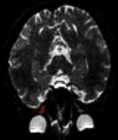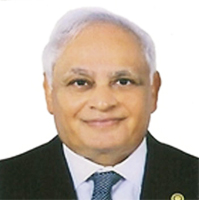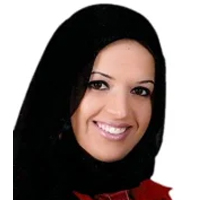Abstract
Research Article
Cytokine Modulatory Effects of Sesamum Indicum Seeds Oil Ameliorate Mice with Experimental Autoimmune Encephalomyelitis
Mohammad Reza Javan*, Mohammad Reza Zamani, Saeed Aslani, Ghader Dargahi Abbasabad, Masoud Beirami Khalaj and Hamed Serati-Nouri
Published: 30 October, 2017 | Volume 1 - Issue 1 | Pages: 086-093
Background: Multiple sclerosis (MS) is an autoimmune disorder of the central nerve system (CNS), which affects the brain and spinal cord. Experimental autoimmune encephalomyelitis (EAE) is the most commonly applied experimental model for studying the MS. The aim of this study was to determine the effects of Sesamum indicum seeds oil on Experimental Autoimmune Encephalomyelitis (EAE) in mice.
Methods: Sesame oil was administrated intraperitoneally three days before immunization. IFN-γ, IL-10, IL-17 and TGF-β levels and mRNA expression in supernatant of and within cultured mononuclear cells were assessed.
Results: According to our results, sesame oil treated mice demonstrated significant disease severity reduction (P=0.01 and 0.001, respectively). Treated EAE mice also represented statistically significant delay in the onset of symptoms in comparison with control group. The average IFN-γ levels and mRNA of sesame oil treated EAE mice were less than untreated EAE group. IL-10 and TGF-β levels and mRNA did not differ significantly in sesame oil treated EAE mice in comparison to untreated EAE group. IL-17 levels and mRNA were also found to be decreased significantly in treated mice in comparison to untreated mice.
Conclusions: Even thoughTH1 and TH17 cells through secretion of IFN-γ and IL-17, respectively, are involved in the pathogenesis of multiple sclerosis and EAE, but IL-10 has been shown to exhibit suppressive effects on these disorders. It can be concluded that sesame oil is able to induce TH2 and TH17-related immune responses and suppress TH1 type in EAE
Read Full Article HTML DOI: 10.29328/journal.aaai.1001008 Cite this Article Read Full Article PDF
Keywords:
EAE; MS; Gene expression; Cytokine; Sesamum indicum seeds oil
References
- Ransohoff RM. Animal models of multiple sclerosis: the good, the bad and the bottom line. Nat Neurosci. 2012; 15: 1074-1077. Ref.: https://goo.gl/MVZUjC
- Rengarajan J, Szabo SJ, Glimcher LH. Transcriptional regulation of Th1/Th2 polarization. Immunol Today. 2000; 21: 479-483. Ref.: https://goo.gl/oTL9LX
- de Andrés C, Rodríguez‐Sáinz MC, Muñoz‐Fernández MA, López‐Lazareno N, Rodríguez‐Mahou M, et al. Short‐term sequential analysis of sex hormones and helper T cells type 1 (Th1) and helper T cells type 2 (Th2) cytokines during and after multiple sclerosis relapse. Eur Cytokine Netw. 2004; 15: 197-202. Ref.: https://goo.gl/LDHzZf
- Sakaguchi S. Editor Regulatory T cells. Springer seminars in immunopathology. 2006.
- Li MO, Wan YY, Sanjabi S, Robertson AK, Flavell RA. Transforming growth factor-β regulation of immune responses. Annu Rev Immunol. 2006; 24: 99-146. Ref.: https://goo.gl/xg5nWv
- Faria AMC, Maron R, Ficker SM, Slavin AJ, Spahn T, et al. Oral tolerance induced by continuous feeding: enhanced up-regulation of transforming growth factor-β/interleukin-10 and suppression of experimental autoimmune encephalomyelitis. J Autoimmun. 2003; 20: 135-145. Ref.: https://goo.gl/iq1wNw
- John GR, Shankar SL, Shafit-Zagardo B, Massimi A, Lee SC, et al. Multiple sclerosis: re-expression of a developmental pathway that restricts oligodendrocyte maturation. Nat Med. 2002; 8: 1115-1121. Ref.: https://goo.gl/DT6Gvj
- Ye P, Rodriguez FH, Kanaly S, Stocking KL, Schurr J, et al. Requirement of interleukin 17 receptor signaling for lung CXC chemokine and granulocyte colony-stimulating factor expression, neutrophil recruitment, and host defense. J Exp Med. 2001; 194: 519-528. Ref.: https://goo.gl/NL8yFo
- Hsu DZ, Su SB, Chien SP, Chiang PJ, Li YH, et al. Effect of sesame oil on oxidative-stress-associated renal injury in endotoxemic rats: involvement of nitric oxide and proinflammatory cytokines. Shock. 2005; 24: 276-280. Ref.: https://goo.gl/4wurMJ
- Gangur V, Kelly C, Navuluri L. Sesame allergy: a growing food allergy of global proportions? Ann Allergy Asthma Immunol. 2005; 95: 4-11. Ref.: https://goo.gl/iCDzuC
- Fillatreau S, Sweenie CH, McGeachy MJ, Gray D, Anderton SM. B cells regulate autoimmunity by provision of IL-10. Nat Immun. 2002; 3: 944-950. Ref.: https://goo.gl/nPkMsk
- Hsu DZ, Liu MY. Sesame oil protects against lipopolysaccharide-stimulated oxidative stress in rats. Crit Care Med. 2004; 32: 227-231. Ref.: https://goo.gl/SJvknG
- Schmittgen TD, Livak KJ. Analyzing real-time PCR data by the comparative CT method. Nat Protoc. 2008; 3: 1101-1108. Ref.: https://goo.gl/qKczfW
- Lassmann H, van Horssen J, Mahad D. Progressive multiple sclerosis: pathology and pathogenesis. Nat Rev Neurol. 2012; 8: 647-656. Ref.: https://goo.gl/978jrj
- Jiang HR, Milovanović M, Allan D, Niedbala W, Besnard AG, et al. IL‐33 attenuates EAE by suppressing IL‐17 and IFN‐γ production and inducing alternatively activated macrophages. Eur J Immunol. 2012; 42: 1804-1814. Ref.: https://goo.gl/agPZNY
- Tyler A, Mendoza J, Ortega S, Firan M, Karandikar N. CD8+ T-cells are required for the action of glatiramer acetate therapy for autoimmune demyelinating disease. J Immunol. 2011; 186: 164.119. Ref.: https://goo.gl/e6og8R
- Guinness NM, Dungan LS, Lynch MA, Mills KH. Interferon-gamma-producing natural killer cells are pathogenic in experimental autoimmune encephalomyelitis by promoting M1 macrophage activation and VLA-4 expression on CD4+ T cells. J Neuroimmunol. 2014; 275: 119-120. Ref.: https://goo.gl/fud1vC
- Lin W, Lin Y. Interferon-gamma inhibits central nervous system myelination through both STAT1-dependent and STAT1-independent pathways. J Neurosci Res. 2010; 88: 2569-2577. Ref.: https://goo.gl/jRvzdr
- Jacklin A, Ratledge C, Welham K, Bilko D, Newton CJ. The sesame seed oil constituent, sesamol, induces growth arrest and apoptosis of cancer and cardiovascular cells. Ann N Y Acad Sci. 2003; 1010: 374-380. Ref.: https://goo.gl/cieHrT
- Miyahara Y, Hibasami H, Katsuzaki H, Imai K, Komiya T. Sesamolin from sesame seed inhibits proliferation by inducing apoptosis in human lymphoid leukemia Molt 4B cells. Int J Mol Med. 2001; 7: 369-371. Ref.: https://goo.gl/dR2atC
- Salem ML. Systemic treatment with n-6 polyunsaturated fatty acids attenuates EL4 thymoma growth and metastasis through enhancing specific and non-specific anti-tumor cytolytic activities and production of TH1 cytokines. Int Immunopharmacol. 2005; 5: 947-960. Ref.: https://goo.gl/M5H3vN
- Komiyama Y, Nakae S, Matsuki T, Nambu A, Ishigame H, et al. IL-17 plays an important role in the development of experimental autoimmune encephalomyelitis. J Immunol. 2006; 177: 566-573. Ref.: https://goo.gl/1sx7ME
- Langrish CL, Chen Y, Blumenschein WM, Mattson J, Basham B, et al. IL-23 drives a pathogenic T cell population that induces autoimmune inflammation. J Exp Med. 2005; 201: 233-240. Ref.: https://goo.gl/ga4c2X
- Skapenko A, Niedobitek GU, Kalden JR, Lipsky PE, Schulze-Koops H. Generation and regulation of human Th1-biased immune responses in vivo: a critical role for IL-4 and IL-10. J Immunol. 2004; 172: 6427-6434. Ref.: https://goo.gl/2dYa8T
- O’Neill EJ, Day MJ, Wraith DC. IL-10 is essential for disease protection following intranasal peptide administration in the C57BL/6 model of EAE. J Neuroimmunol. 2006; 178: 1-8. Ref.: https://goo.gl/C79y9f
- Santos L, Al-Sabbagh A, Londono A, Weiner HL. Oral tolerance to myelin basic protein induces regulatory TGF-β-secreting T cells in Peyer's patches of SJL mice. Cell Immunol. 1994; 157: 439-447. Ref.: https://goo.gl/MhkYHF
- Johns L, Flanders K, Ranges G, Sriram S. Successful treatment of experimental allergic encephalomyelitis with transforming growth factor-beta 1. J Immunol. 1991; 147: 1792-1796. Ref.: https://goo.gl/DwZTmo
Figures:
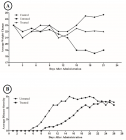
Figure 1
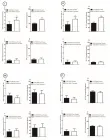
Figure 2
Similar Articles
-
Features of Interferon and Cytokine Status in Atopic DermatitisOspelnikova TP*,Gevorkyan OV, Mironova TV,Andreeva SA,Kolodyazhnaya LV,Ershov FI. Features of Interferon and Cytokine Status in Atopic Dermatitis. . 2017 doi: 10.29328/journal.haard.1001002; 1: 009-014
-
Cytokine Modulatory Effects of Sesamum Indicum Seeds Oil Ameliorate Mice with Experimental Autoimmune EncephalomyelitisMohammad Reza Javan*,Mohammad Reza Zamani,Saeed Aslani,Ghader Dargahi Abbasabad,Masoud Beirami Khalaj,Hamed Serati-Nouri. Cytokine Modulatory Effects of Sesamum Indicum Seeds Oil Ameliorate Mice with Experimental Autoimmune Encephalomyelitis. . 2017 doi: 10.29328/journal.aaai.1001008; 1: 086-093
-
Chemo-cytokines network is main target for control of Allergic asthmaSeyyed Shamsadin Athari*,Seyyede Masoume Athari. Chemo-cytokines network is main target for control of Allergic asthma. . 2018 doi: 10.29328/journal.aaai.1001009; 2: 001-002
-
Gentian Violet Modulates Cytokines Levels in Mice Spleen toward an Anti-inflammatory ProfileSalam Jbeili, Mohamad Rima, Abdul Rahman Annous, Abdo Ibrahim Berro, Ziad Fajloun, Marc Karam*. Gentian Violet Modulates Cytokines Levels in Mice Spleen toward an Anti-inflammatory Profile. . 2024 doi: 10.29328/journal.aaai.1001034; 8: 001-006
Recently Viewed
-
Physical Performance in the Overweight/Obesity Children Evaluation and RehabilitationCristina Popescu, Mircea-Sebastian Șerbănescu, Gigi Calin*, Magdalena Rodica Trăistaru. Physical Performance in the Overweight/Obesity Children Evaluation and Rehabilitation. Ann Clin Endocrinol Metabol. 2024: doi: 10.29328/journal.acem.1001030; 8: 004-012
-
The Role of Genetic Mutations in the HPGD & SLCO2A1 Genes in Pachydermoperiostosis SyndromeShahin Asadi*,Arezo Zare,Sima Koohestani. The Role of Genetic Mutations in the HPGD & SLCO2A1 Genes in Pachydermoperiostosis Syndrome. J Genet Med Gene Ther. 2025: doi: 10.29328/journal.jgmgt.1001013; 8: 001-005
-
Estimation of Radiation Dose to Blood Vessels and Components from Medical Imaging Procedures: Current StatusKhalid M Aloufi*. Estimation of Radiation Dose to Blood Vessels and Components from Medical Imaging Procedures: Current Status. Arch Vas Med. 2025: doi: 10.29328/journal.avm.1001020; 9: 001-002
-
Cancer Cell Resistance: The Emergent Intelligence of Adaptation and the Need for Biophysical IntegrationMohamed H Doweidar*. Cancer Cell Resistance: The Emergent Intelligence of Adaptation and the Need for Biophysical Integration. Int J Clin Microbiol Biochem Technol. 2025: doi: 10.29328/journal.ijcmbt.1001031; 8: 007-008
-
Exploring the Potential of Medicinal Plants in Bone Marrow Regeneration and Hematopoietic Stem Cell TherapyUgwu Okechukwu Paul-Chima*,Alum Esther Ugo. Exploring the Potential of Medicinal Plants in Bone Marrow Regeneration and Hematopoietic Stem Cell Therapy. Int J Bone Marrow Res. 2025: doi: 10.29328/journal.ijbmr.1001019; 8: 001-005
Most Viewed
-
Causal Link between Human Blood Metabolites and Asthma: An Investigation Using Mendelian RandomizationYong-Qing Zhu, Xiao-Yan Meng, Jing-Hua Yang*. Causal Link between Human Blood Metabolites and Asthma: An Investigation Using Mendelian Randomization. Arch Asthma Allergy Immunol. 2023 doi: 10.29328/journal.aaai.1001032; 7: 012-022
-
Impact of Latex Sensitization on Asthma and Rhinitis Progression: A Study at Abidjan-Cocody University Hospital - Côte d’Ivoire (Progression of Asthma and Rhinitis related to Latex Sensitization)Dasse Sery Romuald*, KL Siransy, N Koffi, RO Yeboah, EK Nguessan, HA Adou, VP Goran-Kouacou, AU Assi, JY Seri, S Moussa, D Oura, CL Memel, H Koya, E Atoukoula. Impact of Latex Sensitization on Asthma and Rhinitis Progression: A Study at Abidjan-Cocody University Hospital - Côte d’Ivoire (Progression of Asthma and Rhinitis related to Latex Sensitization). Arch Asthma Allergy Immunol. 2024 doi: 10.29328/journal.aaai.1001035; 8: 007-012
-
An algorithm to safely manage oral food challenge in an office-based setting for children with multiple food allergiesNathalie Cottel,Aïcha Dieme,Véronique Orcel,Yannick Chantran,Mélisande Bourgoin-Heck,Jocelyne Just. An algorithm to safely manage oral food challenge in an office-based setting for children with multiple food allergies. Arch Asthma Allergy Immunol. 2021 doi: 10.29328/journal.aaai.1001027; 5: 030-037
-
Snow white: an allergic girl?Oreste Vittore Brenna*. Snow white: an allergic girl?. Arch Asthma Allergy Immunol. 2022 doi: 10.29328/journal.aaai.1001029; 6: 001-002
-
Cytokine intoxication as a model of cell apoptosis and predict of schizophrenia - like affective disordersElena Viktorovna Drozdova*. Cytokine intoxication as a model of cell apoptosis and predict of schizophrenia - like affective disorders. Arch Asthma Allergy Immunol. 2021 doi: 10.29328/journal.aaai.1001028; 5: 038-040

If you are already a member of our network and need to keep track of any developments regarding a question you have already submitted, click "take me to my Query."







